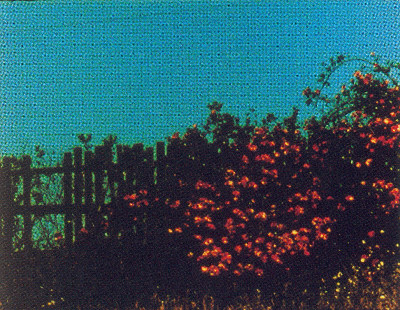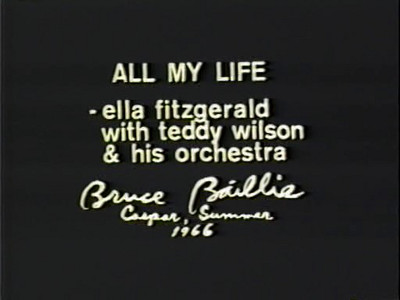

1966, USA, 16mm, colour, sound, 3 min.
...For All My Life, it was the quality of the light for three summer days in Casper, California, up the coast where Paul Tulley lived. It looks like Cork, Ireland, used to. The managerial class, as usual, invaded that lovely little place and neutralized it. But it was a beautiful place for a while.
There were three days: the peak day was the first day I noticed the light. I had this outdated Ansco film I wanted to use. But I didn’t want to make a film. By that time, I knew the toll making a film can take. But the second day the light was still marvellous. A friend was with me, and we started to drive back to San Francisco, and suddenly I said, “No, I cannot turn my back on this!”. We stopped, and I got the tripod, fixed it real solid. Then I practiced and had her call off the minutes: we had about three minutes to get up into the sky in one roll, one continuous shot. Then we shot it and it went as smoothly as possible - I panned with the three-inch telephoto lens and pulled focus as I panned. All My Life came out well. It was inspired by the light (every day is unique as you know), and by the early Teddy Wilson/Ella Fitzgerald recording ‘All My Life’, which was always playing in Tulley’s little cabin, with its condemnation sign on it (one evening, we were having supper and heard ‘tack tack’. We went out and looked at the door. The sign said, ‘You are required to leave these premises by twelve o’clock tomorrow!’). I knew that song had to be the track and that it had to have the same sound it had at Paul’s, with a potato sack over the speaker. It’s supposed to sound a little scratchy. When I got back to the commune, I put the music and the image together.
Bruce Baillie
A Critical Cinema 2, interviewed by Scott MacDonald (June, 1989)
